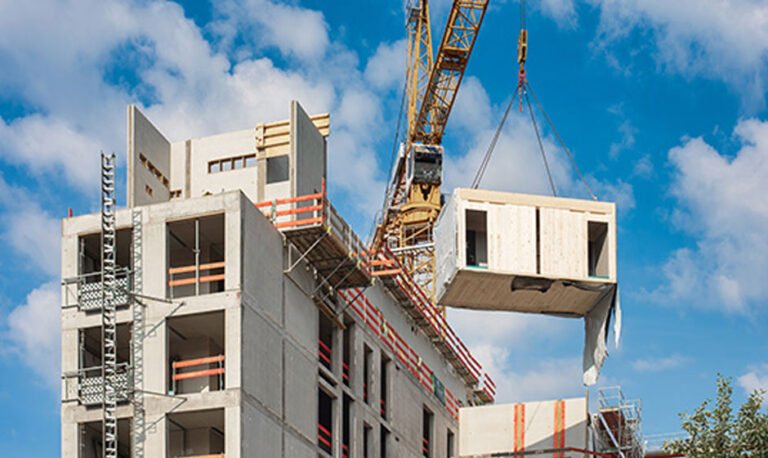Then why are more businesses creating modular structures? Are modular buildings less expensive to build than traditional ones? What benefits can you expect from modular construction methods?
For a good reason, modular construction is becoming more popular. Let’s define modular construction before moving on to the modular construction advantages and disadvantages to ensure everyone is on the same page.
What is modular construction?
Building a structure in a factory from its parts before it is put together on-site is known as modular construction. You may have heard this referred to as “off-site construction” or “prefabrication”; these terms are interchangeable with modular construction.
The same steps involved in other types of building are used in modular construction, but with one key distinction: to speed up construction, the most time-consuming components of a project are moved off-site. Repeated volume building is now possible and has more scalability.
Pros of Modular Construction
a) Unpredictable delays are reduced by modular construction
Weather is a major cause of construction delays, but modular construction eliminates this issue.
Building components are made in controlled environments, reducing the likelihood of delays and providing workers with safe, comfortable surroundings that allow them to be more productive and produce higher-quality goods.
b) Less waste is produced, and less space is needed during modular construction
Modular construction is becoming a popular option to reduce the waste produced on each project as environmental concerns among industry professionals increase.
While giving crews more room to work, modular construction also contributes to the site’s cleanliness and safety. There is less clutter and worry about theft when building components off-site, especially in densely populated urban areas.
c) Modular construction is more economical and effective
Building structures on-site incurs high material and labor costs. Skilled labor is expensive and in short supply in many places. Employers who specialize in modular construction attract talented and competitive candidates. Manufacturers benefit from more accessible access to logistics like rail cars and raw materials. This shortens the construction period without compromising quality.
Cons of Modular Construction
a) Modular construction doesn’t allow for much customization
Mass production of components is a requirement for modular construction, which makes it ideal for projects requiring custom designs and sizes but not for apartment buildings, hotels, or subdivision homes. Creating unique components through modular construction eliminates the advantages of time and cost.
The main benefit of on-site construction over modular construction is customization. No matter how slight, changes to plan designs can be costly.
b) Modular building transportation is expensive and risky
You must consider transportation costs and the possibility of damage during transport because modular construction components are prefabricated away from the job site. One transportation accident is all it takes to have a significant setback.
Planning the logistics of moving modular construction components around takes a lot of time and effort from transportation and rigging companies. Costs associated with transportation can make up a significant portion of any project’s budget to reduce the risk of damaging those components.
c) Apart from building modular homes, there are few alternatives
However, the majority of them concentrate on building single-family homes despite the fact that more manufacturers are making parts for commercial products. For other, more complicated projects, many of the advantages of modular construction are not applicable. Only some manufacturers of modular systems are able and willing to produce goods for sale.
Is modular construction sustainable?
Modular construction is considered more environmentally friendly than conventional construction techniques for several reasons.
Modular construction is considered a prime example of sustainable construction , as it is more environmentally friendly than conventional construction techniques for several reasons.
- Greater adaptability and reuse. The modules of modular buildings can be disassembled and moved or renovated for a new use, which reduces the need for raw materials and the amount of energy used to fulfill the new need.
- Less wasteful use of materials. By recycling materials, managing inventory, and safeguarding building materials, waste is reduced when factories construct buildings.
- They have enhanced air quality. High moisture levels trapped in the new construction are impossible because the modular structure is primarily finished in a factory-controlled environment using dry materials.
Conclusion
Regarding design restrictions, modular buildings are constructed according to the same building codes and requirements as conventional buildings and are identical to their “stick-built” counterparts. Modular construction can be used for anything, from single-family homes to multi-story office buildings.
The modular construction sector is developing quickly by applying digital technologies, lightweight materials, and enhanced manufacturing techniques. Manufacturers focus on sustainability and the high-end market to change the outdated perception of modular home construction.


